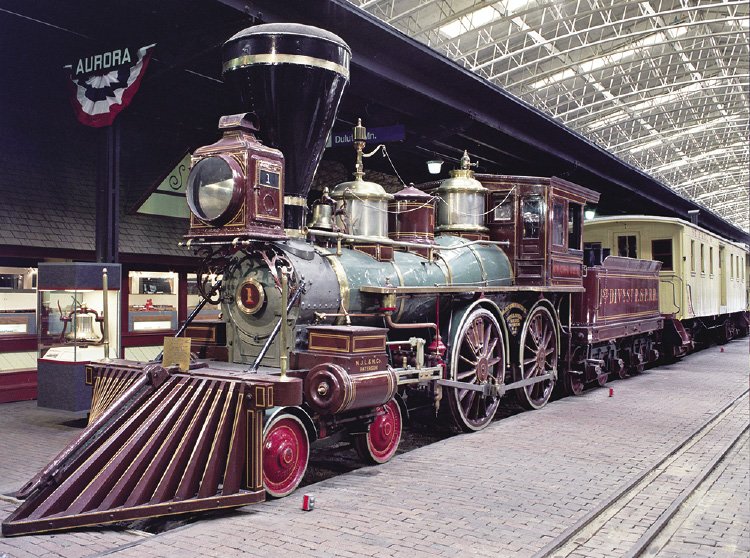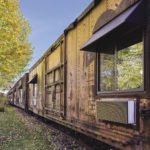Modes of transportation give meaning to the modern spaces they inhabit, not just by their utilitarian nature, but also by their history. Centuries ago, trains and cargo ships were the original vessels for Western modernization efforts. The North Shore, with its abundance of lush resources of fresh water, minerals, and forests, was an important area for both the extraction and exportation of natural resources. Today, many museums along Lake Superior’s shore hope to capture and preserve the pieces and stories of these modes of transportation, around which helped to shape the region’s industries, families, communities, cities, and countries.
Lakehead Transportation Museum, Thunder Bay
The Lakehead Transportation Museum was formed in 2014, after many meetings concerning the preservation of the transportation history of the city. In 2015, the Lakehead Transportation Museum Society (LTMS) purchased and transported the Canadian Coast Guard ship, the Alexander Henry, from the Marine Museum of Kingston, Ontario to Thunder Bay. The ship served as an icebreaker on Lake Superior from 1959 to 1984. Since its permanent docking at Thunder Bay’s Waterfront, the LTMS has opened the museum ship to the public and offers interactive tours. LTMS president Charlie Brown says that the volunteers involved in the operation of the museum are diverse, and range from young students to retired professionals: “Some come to just help scrape and paint the ship, some do tours, some work in our gift shop, some help in keeping our grounds, [but] most have a connection themselves or through their families to some kind of transportation whether it be shipping, or rail, or transit, or lighthouses, or in the manufacturing of transportation artifacts.”
Rossport Caboose Museum
Rossport, population 65, is home to a transportation museum housed in a caboose. A caboose is a railroad car with accommodations for the train crew, which was typically attached to the end of the train. Donated by the Canadian Pacific Railway, the caboose pays homage to the small town’s past as a stop for voyagers on the fur trade route.
Schreiber Railway Museum
The museum in Schreiber, the oldest railway community on the North Shore, is currently closed for the 2019 season. Set to open in the summer of 2020, the renovated Railway Museum will be relocated along Highway 17 and will include a visitor’s centre. Schreiber was born and developed alongside the Canadian Pacific Railway, and the Railway Museum houses many antiques and artifacts from the town’s railroad past. Museum manager Ray Gionet explains that the Schreiber Railway Museum was created “over a cup of coffee in 1992,” between himself and local businessman Don McArthur. At the time, Gionet’s job as the local Bell technician brought him into many Schreiber homes, where he noticed artifacts from the early years of the railroad and rail town life that families had kept. He says he “felt it would be a great fit to place all these hidden treasures in a museum for all to see.” The Schreiber Heritage Days were created to raise money to build the museum, and the annual festival still continues today.

Duluth & Iron Range Railroad Depot Museum, Two Harbors
Among the sites worth a stop in Two Harbors is the Depot Museum, located in a brick building that has earned a spot on the National Register of Historic Places. The building was home to the corporate offices for the Duluth and Iron Range Railroad, which provided transportation for the important iron mining industry as well as transporting passengers until 1961. The museum’s exhibits highlight the region’s mining history as well as the other industries key to the development of the area, including timber and commercial fishing.
Lake Superior Railroad Museum at the Depot, Duluth
Offering interactive exhibits and train excursions, the Lake Superior Railroad Museum in Duluth is a popular attraction, earning the top spot in U.S.A Today’s 10 Best Transportation Museums in the country. With a focus on the history of railroads in the Lake Superior region, the museum showcases its exhibits in a restored Union Depot complex. The North Shore Scenic Railroad, a train ride along the shore of Lake Superior, operates out of the Depot as well. Museum executive director Ken Buehler says that most passengers, especially in the summer, are tourists that ride the Scenic Railroad and then visit the museum. Visitors to the museum are primarily from the seven-county metro area and Thunder Bay, however the museum’s extensive collection and exhibits attracts many train-fanatics too: “Railway enthusiasts find us from wherever they are, because that’s what they do—and we appreciate that,” Buehler adds.—Geena Mortfield




